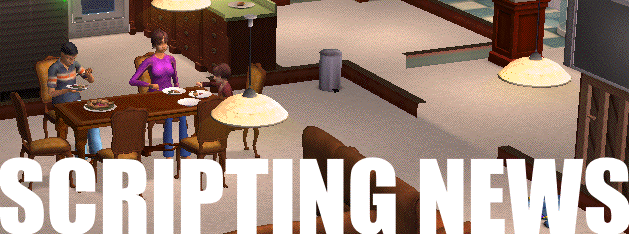
 Moon missions
Moon missions 
 I missed an opportunity to explain something today at the PDF Forum.
I missed an opportunity to explain something today at the PDF Forum.
When people come together and feel a need to communicate is a time when new tools for communicating have a chance to bootstrap. For a simple reason, we have the users' attention. They're interested in doing new things. Normally they're doing something else, living their lives, being busy -- their attention is elsewhere. But when they are confronting a political problem, which is often mostly a communication problem, that's when bootrappers get their boots on! Cause we can do some good now.
I've had this feeling before. In 1996 Congress had passed and the President signed the Communication Decency Act, which gave the government broad powers to control what the Internet was used for. An outcry came on the Internet from people who loved the Internet enough to be broken-hearted at this turn.
So we started a moon mission. Our goal was to have free hosting for people's stories and pictures, what we called 24 Hours of Democracy. It really worked. It wasn't easy but it was huge fun (most of the time). Here's the key point -- this single exercise probably pushed up the adoption of blogging by a few years. Because we had to try a lot of ideas out in a fixed space in time, what came out at the end had to work.
It's time to create again what we created in 1995. A place for people's thoughts and pictures, but this time, with an eye toward permanence. Create something that's independent and as protected as possible from governments and corporations. As safe a harbor as we can create.
 The Worldwide Web User's Manual
The Worldwide Web User's Manual 
I was just making a small pot of coffee, just two cups. So I measured out two full cups of water, and guessed how much coffee to put in the basket. The coffee came out great, but could just have easily come out awful. ![]()
So if Wikipedia is the web's encyclopedia, where is the web's user's manual? It would be infinitely expandable, aspire to cover everything, and take a practical 1-2-3 approach to doing things we humans do on this planet in the times we live in.
 How to set up Apache on Windows
How to set up Apache on Windows 
Here's how I set up an Apache server...
1. Find apache_2.2.9-win-x86-no_ssl-r2.msi, download install.
2. Create aliases of these files on the desktop:
3. Change the root directory from htdocs in the Apache folder to something much shorter. I like to use C:\www. If you don't shorten this, all your file names are going to be very long and waste a lot of typing and visual space.
4. Uncomment the inclusion of the vhosts.conf file in httpd.conf.
5. Uncomment the inclusion of the proxy module
6. Add default.html to the list of index files
7. Make your .htaccess files work by setting AllowOverride to All
8. Uncomment the include for modrewrite. This allows your .htaccess files to do reasonable kinds of redirects, like sending references to www.somedomain.com to somedomain.com
9. Uncomment the include for proxy_http_module
 Change in my JSONP approach
Change in my JSONP approach 
My server isn't designed to do the kind of task that JSONP requires it to do, esp in service of apps that make lots of calls to the server each minute (for each user). I just spent a few weeks cleaning up all kinds of things like this, so I'm not willing to keep hosting it.
To give you an idea of what it's doing to the server it's running on, here's what its performance monitor graph looks like now. Obviously that's not workable.
So, I've modified my app to produce a static file that I can serve without this cost that calls a routine in your page called onGetRiverStream. You don't get the flexibility to say what routine you want me to call, but you can have that routine call the routine you want.
Here's the new location you should include. It's a script.
http://daveriver.scripting.com/river.js
The static file it's generated from is still available, and you can have your own JSONP handler work with it if you like. Or if you really want to be community-minded, you could let other developers access it as well.
Update: Here's what the performance monitor graph looks like after I switched to this new policy.



